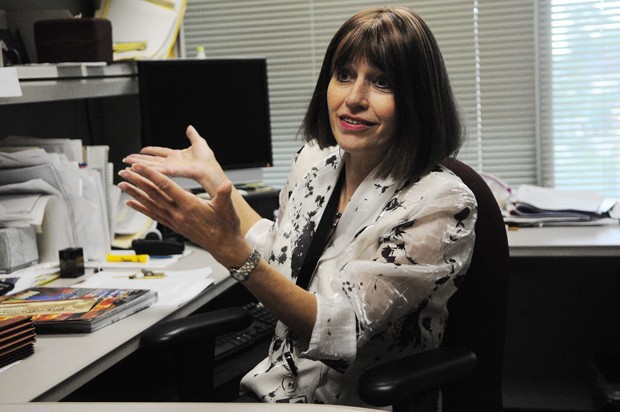The feeling customers get from a store’s flooring can affect how a product makes them feel, which can in turn determine whether they buy it, according to new research from University of Minnesota’s Carlson School of Management professor Joan Meyers-Levy, who worked in Vancouver with colleagues from the University of British Columbia.
The real-life implications of the research in retail shops depend largely on whether customers are looking at a product from just inches away or from a distance, Meyers-Levy said.
A plush carpet, for example, would make a distant product seem more comfortable, while hard tile would leave the customer less content with the same product, the findings show.
The research has clear implications for retailers, Meyers-Levy said.
“It says something about how you want to set up your store,” she said.
At a distance, when fine details are less apparent, customers “fill in” the gaps in their perception of a product with their physical sensations at that moment. Customers take their physical comfort into consideration on a subconscious level, Meyers-Levy said.
In the study, researchers had participants stand on both vinyl tile and soft carpet in an otherwise bare room to judge items like a gift basket, a vase and a clothes hamper.
When the customers are near a product, they have a full understanding of its detail. In this case, Meyers-Levy said, the flooring acts as a frame of reference.
When looking at a couch, for example, it would seem very comfortable and suitable in comparison to cold, hard vinyl tile.
“It’s an interesting theory,” said Alison Embrey Medina, Executive Editor of the retail interior design magazine DDI. “The science of trying to figure out how a consumer shops is one that millions of companies spend billions of dollars on every year.”
Ryan Chermak, a 2008 University architecture graduate works at Art & Architecture Inc., an antique store in Prospect Park. There, carpet would be a nuisance given the carts rolled around the shop. Utility is more important, he said.
Other factors can also come into play.
Retail store flooring is important, even beyond the tactile factor, Chermak said.
“There’s other senses that are acting,” like the sound feet make on tile, he said.
Echoing this sentiment, Medina said many factors come into play for retail interior research, and there is no exact science to it yet.
Different stores may apply such research differently.
At a mattress or bedroom furniture store, for example, retailers would want customers to feel comfortable and therefore would apply the
research to reach those means, Meyers-Levy said. However, office furniture retailers may use the research to achieve the opposite effect — a firm, sturdy perception of their filing cabinets and desks, she said.
Even larger stores that use vinyl tile simply for utility can learn from the research.
In stores like Wal-Mart, carpet may be used in a small “feature area” of the store, such as for home furnishings, Medina said.
“There’s definitely that appeal of making a customer feel like they’re in a comfortable setting, like they’re in their own home where they would actually use the product,” Medina said.
The subconscious aspect of Meyers-Levy’s research is a huge factor, as in much consumer research.
In her work at the magazine, Medina sifts through similar research daily, and has found the subconscious plays a huge role in many of the findings.
Meyers-Levy focuses on this type of consumer research and has looked at similar phenomena in the past, such as the effects a store’s ceiling height can have on purchasing decisions.
Subconscious or not, flooring is important to the consumer experience, Medina said.
“It’s definitely an important piece of the puzzle.”

Image by Gina Reis
Carlson School of Management professor Joan Meyers-Levy explains a customer’s subconscious connection between a retail store’s flooring at its product.
Study: Store flooring can affect purchasing decisions
Consumers’ subconscious attitudes influence buying behavior.
Published June 16, 2010
0

